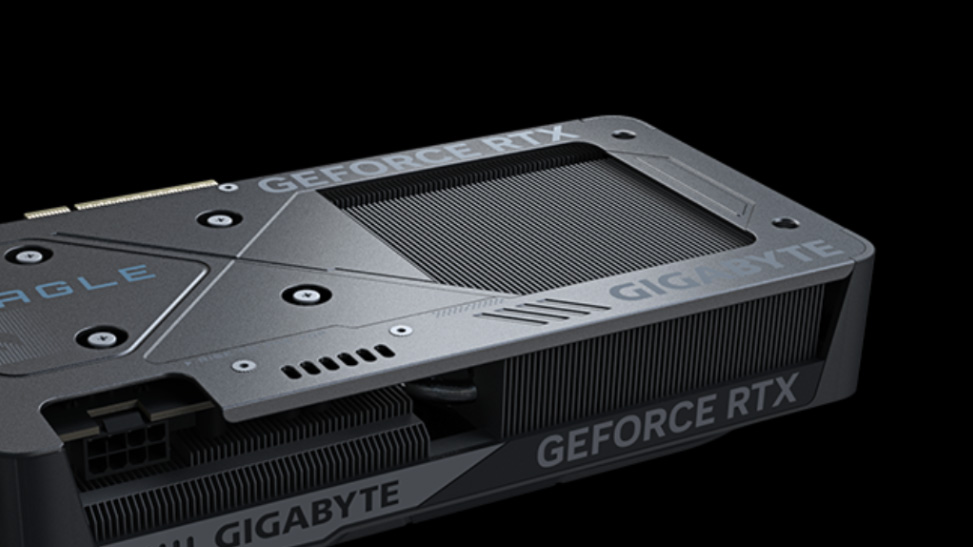Nvidia RTX 5050 won't use GDDR7 memory— entry-level GPU tipped to use Samsung & SK hynix GDDR6 modules instead
Nvidia will utilize different GDDR memory versions on its RTX 50 series graphics cards, just like the Turing generation.

Rumors have made it clear that the RTX 5050 might use older GDDR6 memory rather than speedier GDDR7 (or even GDDR6X for that matter). Benchlife.info reports that Nvidia add-in board partners have confirmed the RTX 5050 will use GDDR6 memory from two suppliers, Samsung and SK hynix.
The news puts to rest any inkling that the RTX 5050 might use GDDR7, at least for the launch version (assuming there will be multiple variants in the future). Moving to GDDR6 will inevitably improve production costs for the RTX 5050 and improve any potential supply chain issues that might impact GPU production (on the memory side). GDDR6 is a very mature and popular memory type at this point in time, and is being produced by a variety of manufacturers (not just SK hynix and Samsung).
Having two suppliers (for the RTX 5050) not only boosts the overall number of GDDR6 chips Nvidia can purchase but also helps alleviate any potential supply chain bottlenecks that might occur. Nvidia can bounce between the two manufacturers, relying on one more than the other if one manufacturer can't keep up with orders.
What has still not been confirmed is the performance of the GDDR6 modules used on the RTX 5050. GDDR6 has been around for so long that multiple speed bins exist (not even counting GDDR6X), ranging from 12 Gbps, all the way up to 20 Gbps. Nvidia could use any version between these two ranges for the RTX 5050, though more recent video cards have been taking advantage of 16 Gbps, 18 Gbps, and 20 Gbps versions of GDDR6. (The RTX 4070 GDDR6 and RX 9070 series use 20 Gbps GDDR6.)
Previous rumors suggest the RTX 5050 will take advantage of 8GB of GDDR6 memory and a 130W power rating. The entry-level Blackwell GPU will allegedly use a fully enabled GB207 die boasting 2,560 CUDA cores, 20 SMs, and a 128-bit memory interface; if the RTX 5050 were to use 18 Gbps GDDR6, that would translate to 288GB/s of memory bandwidth. For context, the RTX 5060 has almost twice the bandwidth, featuring 448GB/s.
Even though the RTX 5050 will not use GDDR7 memory, that does not guarantee the RTX 5050 won't use it in the future. Nvidia has created multiple versions of its xx50 class cards in the past, sporting different memory types. The GTX 1650 was one such GPU, which came in a whopping four different trim models during its lifecycle, not even counting the GTX 1650 Super. Nvidia launched the GTX 1650 in 2019 with 8 Gbps GDDR5 memory, then a year later launched an upgraded GTX 1650 with 12 Gbps GDDR6 memory. Eventually, Nvidia also released TU106 and TU116 versions of the GTX 1650 with the same specs as the GTX 1650 GDDR6 variant.
In addition, the laptop version of the RTX 5050 sports GDDR7 memory, making it even more likely that Nvidia will eventually make a GDDR7 version of its RTX 5050 desktop counterpart. If this happens, we will most likely see a GDDR7 version during Nvidia's RTX 50 series Super refresh, during which the company is rumored to be refreshing at least some of its outgoing Blackwell consumer GPUs with 3GB GDDR7 ICs. If Nvidia extends its Super refresh down to the RTX 5050, the RTX 5050 Super might feature 12GB of 28 Gbps GDDR7.
Get Tom's Hardware's best news and in-depth reviews, straight to your inbox.
Follow Tom's Hardware on Google News to get our up-to-date news, analysis, and reviews in your feeds. Make sure to click the Follow button.

Aaron Klotz is a contributing writer for Tom’s Hardware, covering news related to computer hardware such as CPUs, and graphics cards.
-
hotaru251 as bad as the 5060 8gb is this "50" sku might as well not been made as its likely going to lose in everything vs intel's cheaper gpu's.Reply -
palladin9479 Replyhotaru251 said:as bad as the 5060 8gb is this "50" sku might as well not been made as its likely going to lose in everything vs intel's cheaper gpu's.
It's the budget 40 model from previous series usually available to OEMs and basic systems. -
Pemalite I just want it to be single slot, half height.Reply
I wouldn't be surprised if it came with 4GB or 6GB of Ram though. -
Xajel ReplyNeilbob said:They have to use GDDR6 in order to be able to price it as low as $299.
$299?
Dude, some used RTX 3070 can be had for that now, xx050 should be $199-249 but I know this isn't going to happen.
The good old days are gone... -
fiyz Reply
In essence, it's so manufacturers can push more ewaste out onto uneducated consumers... All the while justifying higher price points for more premium products.palladin9479 said:It's the budget 40 model from previous series usually available to OEMs and basic systems. -
DS426 No reviews allowed on this model, right? ;)Reply
Definitely seems like an OEM product, not retail.
Not sure why they would keep the full 5060 die when mem bandwidth is almost cut in half. I guess core clocks would be noticeably lower. To me, at this level, one might as well go down to a "5040" that would have a cut-down 5060 die and lower clocks to meet a 75W TGP budget and therefore make for a good HH-HL card for SFF and ITX towers. -
palladin9479 Replyfiyz said:In essence, it's so manufacturers can push more ewaste out onto uneducated consumers... All the while justifying higher price points for more premium products.
Not ewaste. I know this is really hard to believe, but we (that includes you) are the minority consumers in this space. The majority of consumers just go in and buy some prebuilt box for a specific task, never upgrade it and replace it every three to five years. People as a rule treat computers the same way they do every other house hold appliance. When was the last time you upgraded the motor in your blender, or the heating coils in a toaster oven? These cards get put into such devices because those users do not "game".